Apparently, there are people in this world who will insist on shiny new boat fenders. They don’t think twice about paying $100 for a piece of inflated vinyl that will soon be crushed, banged, and stained beyond recognition. For the rest of us, there are perfectly good used fenders on eBay. Add a cover made from a bucks worth of surplus Sunbrella, and were good to go.
If you’re in the shiny-fender crowd, we love you anyway, but this article is not for you. If, however, you’ve ever prowled Craigslist for a used outboard or spent a Sunday afternoon sifting through stove parts at a used gear chandlery, read on. With the economy in the dumps, it’s no surprise that North Americas marine chandleries are seeing a steady tide of used equipment coming into their back lots. As boats get sold, builders file for bankruptcy, manufacturers close their doors, the leftover gear-good gear- winds up on eBay or in local consignment shops.
Generally, we used to see an average of about two people a day come into the store to sell something, now we’re seeing six to eight people, says Chuck Fitzgerald, of Sailorman, the landmark new and used marine chandlery in Fort Lauderdale, Fla. I never used to turn stuff a way, now Im being much more selective. Im having a hard time finding space for stuff.
Phone calls to a half-dozen consignment and marine surplus stores around the country yielded similar reports: Boaters are bringing in more gear to sell, and inventory liquidation auctions are yielding some bargain scratch-and-dent goods.
Its sad to say, but the recession has brought some very good deals for us, says Josh Minney of Minneys, a used-gear institution in Newport Beach, Calif. We just bought a whole bunch of really great stuff from Cabo Yachts, who are closing up shop here and moving to North Carolina.
Sensing a moment of opportunity for the offshore cruiser outfitting his fixer-upper, PS set out to compile a mini-guide to used gear purchases. If you are looking for more specific advice to direct your used gear hunt, our Gear Buying Guide is a good place to start. (Get it used on Amazon, for about half the price as it is new.) Our objective here is not to provide a comprehensive report, but a snapshot of what particular gear to look for used, and what to stay away from. We also need to keep in mind that every sailors needs are different, or as they say in the business-one mans trash is another mans treasure.
Online shopping sites like eBay and Craigslist are logical places to search, but this article focus mostly on the established marine stores that specialize in selling used sailing gear. We sent out a survey to 19 different chandleries that readers recommended to us, and those that responded are listed in the table on page 18. Most of these stores also have a presence on eBay and Craigslist. If we missed any good ones, please let us know.
Four basic rules to keep in mind when shopping for used gear: know what you need, research your options, buy only what you need, and insist on a return policy that allows you ample time to return any lemons. Unless you’re a regular customer, ask for a full cash refund. Some stores will only give you credit, which means your boat may soon become the best-fendered vessel in the marina. Walking into a used-gear chandlery without a clear purpose will quickly empty your wallet and fill your garage (or quarterberth) with stuff you don’t need.
Deck Gear
If you are serious about striking gold in a used gear shop, the deck gear aisles are a good place to start digging. Whether you are looking for a bigger genoa winch or a set of snatch blocks for a secondhand asymmetrical spinnaker, a used chandlery can offer up some true bargains-if you know what to look for. Contrary to what you might expect, this is a category where bright and shiny isn’t necessarily a good thing. Some of the best deck hardware will be covered in a green patina of verdigris. And some of the worst will be sparkling clean and in its original packaging.
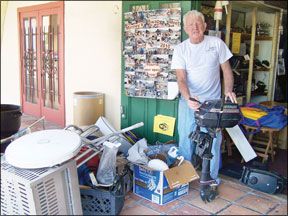
The thing to remember about hardware, says Practical Sailor Technical Editor Ralph Naranjo, is that high quality silicon bronze is golden. The stuff that passes for marine-grade metal today-plumbing in particular-can’t compare to the well-made bronze fittings that have been salvaged from older vessels. Naranjo, who produced a detailed report on the problems with stainless steel in the February 2007 issue of Practical Sailor, warns buyers to be extremely wary of stainless steel. (See The Problem with Stainless Steel, on page 21.)
So where are the bargains? Apart from being a good place to track down those oddball parts for boats no longer in production, the deck hardware bins in used gear chandleries are often brimming with high-quality bronze hardware from the 1960s. These carefully cast marine alloy parts reflect a level of workmanship that is hard to find today.
The difference in quality between old and new hardware brings up an important point. Typically, when a cleat or block breaks, the owner will scour the planet for an exact replica to fit the existing bolt holes and to match others on the boat. For a true refit, a more sensible approach is to recognize that if one cleat broke, others are suspect. Dont let mismatched bolt holes scare you away from an upgrade. Drilling and sealing new holes and fitting new backing plates is a small price to pay for peace of mind.
Not to be confused with cheap brass hardware that decorates the local seafood restaurant, good-quality bronze hardware is usually recognizable by the smooth finish, perfect symmetry, and a green patina. Corrosion or pitting usually means the hardware is plated, or has higher amounts of unwanted zinc.
On the boatbuilding side, most production builders began cutting back on high-quality metals in the early 1970s, when prolonged strikes and high demand for copper and tin during the Vietnam War made alloy prices soar. So if you’re looking at bow chocks scrapped from an old Cruising Club of America-era cruiser, chances are it is good stuff. Beware, however, of cast aluminum, which succumbs much sooner to the rigors of sea. Monel is another good alloy found on those pre-Vietnam era boats.
What kind of savings can you expect? A set of three 12-inch bronze cleats on eBay recently sold for $50, about one-third the price of new.
Winches offer a very good opportunity for savings, but check for excess wear in the pawl seats, which can be pricey to repair. The used-gear chandleries are thick with some excellent bronze-drum Barient winches that were cast off simply because they werent self-tailing. Self-tailing winches sell fast, so your best bet is to get on a call me list. Stay away from aluminum drum racing winches, notorious for corrosion issues.

Some of the better winches from Barient and Barlow are no longer in production, but fortunately companies like Hutton-Arco (www.arco-winches.com) still supply parts, and many used gear chandleries carry bins full of spares. Keep in mind that undersized winches are pandemic among production boats. If your budget leaves you enough money for small self-tailing winches, or a bigger set of conventional winches, the latter may be a more practical option.
Bottom line: Don’t let a dull coating of green verdigris fool you. The hardware beneath may be worth its weight in gold. Putting your money on glittering used stainless, on the other hand, is a gamble.

Ground Tackle
Since you will be chucking an anchor overboard anyway, it seems like a logical item to buy secondhand. But before you buy, you should have a very clear picture of the size, type, and brand of anchor you are looking for. Practical Sailor has conducted numerous anchor tests over the years, offering a good overview of options. Typically, the cruising sailor will have a mix of anchors at his disposal: a claw- or Bruce-type, a plow-type, and a Danforth-type.
Once you know what you need, you can save 30 to 50 percent by buying the anchor used instead of new. A sailor who isn’t married to the next best thing in anchors can do particularly well. One of the most recent trends has been a shift from the old standby CQRs to more modern Deltas or concave-fluke plows like the Spade, Rocna, or Manson, which have been shown to set faster and/or hold better than the older designs in some PS tests.

Although it has not been as fast setting as some newer ploughs, the genuine drop-forged CQR anchor (recognizable by the shank stamped with the words Made in Scotland) remains a good anchor for cruising, particularly in sandy bottoms. A one-piece drop-forged genuine Bruce anchor (shank stamped Bruce) is another good workhorse, but rare. Usually, youll see poorly cast Bruce-style knockoffs for sale, some of which belong in a scrap heap. Paul Luke three-piece fisherman-style anchors make good spare anchors, and the original High Tensile Danforth HTs (marked Danforth on the shank) are very well made. Later versions had less meat on them, and less consistent workmanship. Rocnas, Spade, Kingston, Manson, and SuperMAX are some of the other anchors PS has tested; each has a vocal crowd of proponents.
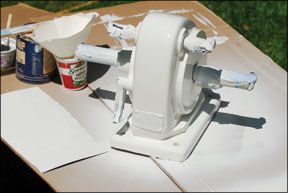
The chief problem with any older anchors is that the protective layer of galvanized zinc wears thin. In the past, getting an anchor or even a chain re-galvanized wasn’t a problem, but as metal foundries have moved offshore and U.S. environmental rules have tightened, places that will galvanize anchors and chains are scarce. The cost of re-galvanizing an anchor can offset any savings you might achieve by buying it used.
Chain presents a special problem. You can find spools of good surplus chain that never went into service. However, used chain is usually chucked for good reason. Unless you need only a 30- to 60-foot chain leader for your nylon rode, your bargain chain is likely to have a weak link.
If you do decide to opt for used chain, inspect every link very carefully and check for stamps indicating its origins. In our tests, hot-dipped Acco chain outlasted imported varieties, but it is not easy to tell the origin of a chain by its appearance. High-grade Acco chain is usually stamped with 3B (short link) and G4. If you have a windlass, you will want to confirm what size links best conform to your windlass. Vinyl-coated chain-which can have hidden corrosion-is a terrible idea, new or used.
Bottom line: Anchors can be a hit-or-miss proposition. If you stick with good-quality, drop-forged anchors of a reputable brand, you are pretty safe. Chain should be of a known origin, clearly marked, and in near new condition to be worth considering. Inspect every link.
Electronics
Used electronic gear sells for pennies on the dollar, so for the person who knows what he wants, slightly used, or re-manufactured marine electronics can offer excellent value. Electronics often have hidden problems, so the deal needs to be very good, with a solid return policy.
When available, factory re-manufactured equipment offers exceptional value, and we have had good experiences with re-manufactured products. These are typically items that have been returned to the manufacturer for warranty repair, or from retailers, with less than perfect packaging. These systems have been checked, appear to be in new, or in nearly new condition, and have a manufacturers warranty. Re-manufactured Raymarine equipment has a two-year warranty, and Garmin provides a one-year warranty. If you are shopping for 12-inch plotters, the savings on a remanufactured Garmin 5212 or Raymarine E-120 can be up to $1,000. Factory re-manufactured systems are available on the retail market, but you have to be vigilant and patient to find exactly what you want.
Good deals can be had on eBay, and most sellers offer reasonable consumer protection, as long as you use an eBay-approved payment system for the purchase. In the case of buyers remorse, there is no protection, so make sure what youre buying is what you want.
Specialized classified ad websites are also good places to look for used equipment, and there are many. A good example is www.eham.net, which deals exclusively with ham/SSB radio equipment, and there are auction houses that deal in marine equipment. You can also check bulletin boards at your local marine store or sailing club, or contact local dealers to see if any high-roller is pulling out perfectly good gear in order to make room for the latest and greatest.
Now what to be careful about: There is nothing more frustrating than buying an older piece of marine electronics, only to discover later that an interface cable is missing and no longer available anywhere. So when buying older equipment, make sure you have all of the cables, chips, mounts, and other accessories you will need to make it work. See if the seller can demonstrate that the equipment works, insist on a refund arrangement if it doesn’t work.
The other big pitfall is buying equipment that is no longer repairable by the manufacturer. Buying a Raytheon 41xx radar system for a fraction of the cost of a new unit, spending a day installing it, and having it break the next week is now no longer a good deal, because it can’t be fixed. Call the manufacturer, and check on repairability and accessory availability before buying older equipment.
Bottom line: Know exactly what you want, do your homework, be patient, and ask questions. They are still selling LORANs on eBay, so be careful.
Systems and Propulsion
From refrigeration modules and watermakers to outboards and diesel engines, you can find $1,000 systems going for $200 at a used-gear chandlery. Most chandleries will give you enough time after purchase to have the gear checked out at your expense. If it doesn’t pass muster and you return it within the prescribed period, which can range from five to 30 days, you usually get a full refund.
Consignment products aren’t tested by the chandlery staff, and most used-gear chandleries don’t check a system before they buy it. The practice is to buy it cheap and sell it cheap, so it is up to the buyer to determine whether it works or not. For the cruising sailor looking for spare parts or rebuilding a familiar piece of machinery, having a cheap clone to cannibalize can be handy. But if you aren’t familiar with a particular watermaker to begin with, you are pushing your luck buying a used one. Mechanical systems have finite lives, you don’t want to buy one on its last legs.
Dinghy outboards are perhaps the one shining star in this department. Many two strokes are cast off before their time for want of a carburetor rebuild. It usually costs only $50-$75 to have a local mechanic take a look.
Remember that every system has its low-price season. For example, shop for cabin heaters in the summer, not the winter.
Bottom line: As with any complex equipment, make sure you have a reliable parts/service source before committing.

Safety Gear
Many sailors have a natural aversion to buying secondhand safety gear with good reason: Their life may depend on that equipment. However, the field of safety gear is wide, and some used equipment is just as good as new, and half the price. A good quality Lifesling2, conventional horseshoe buoy, or throw-ring can be recycled many times, with only the vinyl cover and webbing straps in need of replacement. Fiberglass man-overboard poles can also have second lives-just check for flotation, and watch out for the el cheapos that are loaded with fiberglass splinters.
PS never liked the inflatable Lifesling (recently dropped by West Marine), and given the history of bad harness designs and recalled self-inflation systems, only a fool would blindly purchase a used-harness or inflatable PFD. Malfunctioning personal strobes are not uncommon. If someone says the light just needs a new battery don’t take them at their word.
The same buying rules for general-purpose marine electronics apply to electronic safety gear, keeping in mind that there is a lot more at stake. Used Emergency Position Indicating Radio Beacons are a bad idea. New batteries for many models cost more than brand-new EPIRBs (a PS pet peeve), and as we reported in the April 2010 issue of Practical Sailor, registration snafus-more likely with secondhand EPIRBs-can lead to disaster. Be particularly wary of an EPIRB that came off a foreign vessel, which presents all kinds of complications. Your best bet with EPIRBs is to bite the bullet and buy a new one.
Contrary to what one might expect, a used life raft can present a good deal. Look for nearly new offshore models certified as exceeding International Standards Organization (ISO), Safety of Life at Sea (SOLAS), or International Sailing Federation (ISAF) standards with well-kept inspection histories. For a short list of models PS likes, see the April 2007 issue. Regardless of whether or not it is still certified, you should get the raft re-inspected at an approved U.S. Coast Guard and/or life raft inspection station. Most used gear chandleries allow time for a full inspection and will give you your money back if it does not pass, but an inspection alone can run $300-$500. A full repack, if all new gear is required, can push the cost over $1,000. Be wary of valise-packed rafts, which tend to live a short, brutish existence.
Bottom line: If you are set on buying a used life raft, try authorized dealers first.
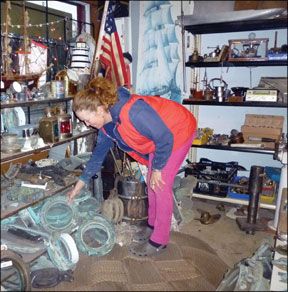
Spars, Sails & Furling Gear
Bent, crimped, or corroded masts and booms are best avoided, but otherwise, a used spar can be an excellent option for the boatbuilder or boat restorer-or the unlucky guy who gets caught under an Intracoastal Waterway drawbridge. It can pay to have a professional riggers opinion. High-quality anodized aluminum (T6061 alloy) is preferred. Painted spars can hide fatal flaws.
Used sails are a godsend for many cruising sailors, but these will need to be tried for fit and closely inspected at the corners and edges. Some sails wind up in the used sail shop because they were poorly cut. Most chandleries will allow time for you to fit the sail and sail with it before buying. Some chandleries in active racing areas, like Minneys in Newport Beach, will specify a shorter review time for sails to dissuade racers from testing them on race days and returning them the next day.
One of the favorite corners of Bacons Sails, a landmark used gear chandlery in Annapolis, Md., is the bench where buyers can build their own spinnaker poles using the stores huge selection of extrusions and end fittings. Spinnaker poles are high up on the list of good used gear.
Bottom line: Inspect the sails corners and edges, and try before you buy.
Conclusion
While theres nothing wrong with just browsing in a used gear store, it is hard to resist the urge to buy something just because it seems like such a great deal. Garages, basements, and quarter-berth lockers are piled with terrific bargains that never got installed. Consider how and why the gear wound up on the market. The bins of identical surplus no-name cleats are there for a reason-probably not a good one.
Sadly, some of the best deals are on gear from boats whose owners have died. The boat gets sold, and the gear, some of it still in its original boxes, gets taken down to the used gear chandlery.
The best way to insure that you are getting a good deal is to do your research first. As we’ve repeated a couple of times already, you should have a good idea of exactly what you need, and then search for that particular piece of equipment.
During the past four decades, Practical Sailor has tested thousands of pieces of equipment, and by using the SEARCH button on our website, you can usually track down the last test of the type of equipment you’re considering. If you like browsing through print versions of the magazine, you’ll probably find a stack of old issues at your used gear chandlery, selling cheap (just don’t tell the publisher where you heard that). If you still can’t find a test, you can always e-mail the editor at [email protected], and hell help you track it down.
MARKET SCAN: Used-Gear Chandleries
| STORE | LOCATION/TELEPHONE | SQUARE FOOTAGE | YEARS OPEN | SELECTION HIGHLIGHTS | CONSIGNMENT SPLIT (SELLER/STORE) | RETURN PERIOD |
|---|---|---|---|---|---|---|
| BACON ASSOCIATES | Annapolis, Md. www.baconsails.com 410/263-4880 | 10,000 sq. ft. | 52 yrs. | Sails, winches, deck gear | 60/40 percent | 10 days |
| BOATERS' EXCHANGE | Sydney, B.C. www.theboaters-exchange.com 877/655-3101 | 4,000 sq. ft. | 25 yrs. | Wide range of marine gear | 60/40 percent | 7 days |
| BOATERS' RESALE SHOP OF TEXAS | Kemah, Texas www.boatersresaleshopoftexas.com 713/614-8884 | 7,200 sq. ft. | 5 yrs. | Radar, GPS, compasses, "just about everything" | 65/35 percent | 3 days |
| MARINECONSIGNMENT.COM | Wickford, R.I.; Mystic, Conn., www.marineconsignment.com 401/295-9709; 860/245-0588 | 7,200 sq. ft. | 7 yrs. (R.I.) | Marine gear (R.I.); antiques (Conn.) | 60/40 percent | 14 days |
| THE MARINE EXCHANGE | Port Townsend, Wash. www.themarineexchange.com 360/385-4237 | 5,000 sq. ft. | 29 yrs. | Cruising, commerical fishing gear | 70/30 percent | Store credit, flexible time limit |
| MINNEY'S YACHT SURPLUS | Newport Beach, Calif. www.minneysyachtsurplus.com 949/548-4192 | 10,000 sq. ft. | 50 yrs. | Sails, anchors, new chain, props, winches | Buys used gear, cash on the spot | 30 days, 5 days for sails |
| NEWPORT NAUTICAL | Newport, R.I. www.newportnautical.com 401/847-3933 | 8,000 sq. ft. | 18 yrs. | Winches, shackles, blocks, etc. | 60/40 percent; 75/25 if seller takes store credit | 5 business days |
| SAILORMAN | Fort Lauderdale, Fla. www.sailorman.com 401/847-3933 | 10,000 sq. ft. | 35 yrs. | Anchors, winches, davits, windlasses, etc. | 60/40 percent | 3 days |
| SAILORS EXCHANGE | St. Augustine, Fla. www.sailors-exchange.com 904/808-0667 | 3,5000 sq. ft. | 15 yrs. | Anchors, sails, winch parts, "everything" | 70/30 percent, usually buys outright | 10 days for cash/store credit after |
| SECOND WAVE | Second Wave www.secondwave.cc 206/632-4371 | 10,000 sq. ft. | 11 yrs. | Sails, winches, shackles, lots of good books | 65/35 percent | 5 business days |
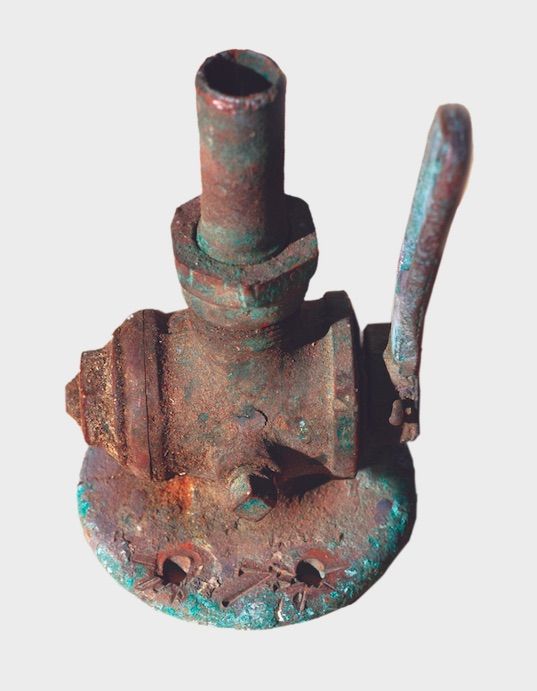
Along with those items mentioned in the main article, here are few more used-gear bargains to watch for. Got a great buy to share? E-mail it to [email protected].
Paul Luke stove: The classic Paul Luke stoves are as durable and practical as they appear, and renowned for their excellent balance when gimbaled.
Ships clocks, oil lamps, and barometers: Weems and Plath (www.weemsandplath.com) still services brass chiming clocks, but it’s better to buy one that still works. Don’t mistake the cheap-plated oil lamps for solid brass.
Hypalon dinghy: Boat sales often don’t include the dinghy. Look for Hypalon-tube Achilles or Avons made after 2003, and preferably from a place with a short sailing season.
Hatches: If you’ve priced new hatches lately, then the appeal of a good hatch is obvious. If it leaks or is scratched, get an estimate from Select Plastics (www.selectplastics.com) or do it yourself.
Sunbrella: The DIY sailcover is a lot cheaper when you use surplus material from the local used gear chandlery.
Windvanes: If it’s a pre-1992 Monitor, adding the reinforcing strut guard from Scanmar (www.scanstrut.com) is worth the expense. The Aries windvane website (www.ariesvane.com) offers good research material on these classic workhorses.

One of the biggest hits to a boater’s wallet is the high price of 316 stainless-steel hardware. But trying to sort the good from the bad in a bin full of mystery-grade stainless-steel screws and bolts is like rolling dice.
However tempting the price, well-used stainless-steel shackles, blocks, turnbuckles, tangs, or similar hardware should not be used for standing rigging. These components break with little or no warning sign, and there is no way to tell just by looking at a piece of hardware how much life is left in it. Swage fittings on wire rope are notoriously unreliable. Old stainless-steel snap shackles bite the dust with regularity. Even seemingly bulletproof chainplates can crack without warning. Buying used vinylcoated lifelines is courting disaster.
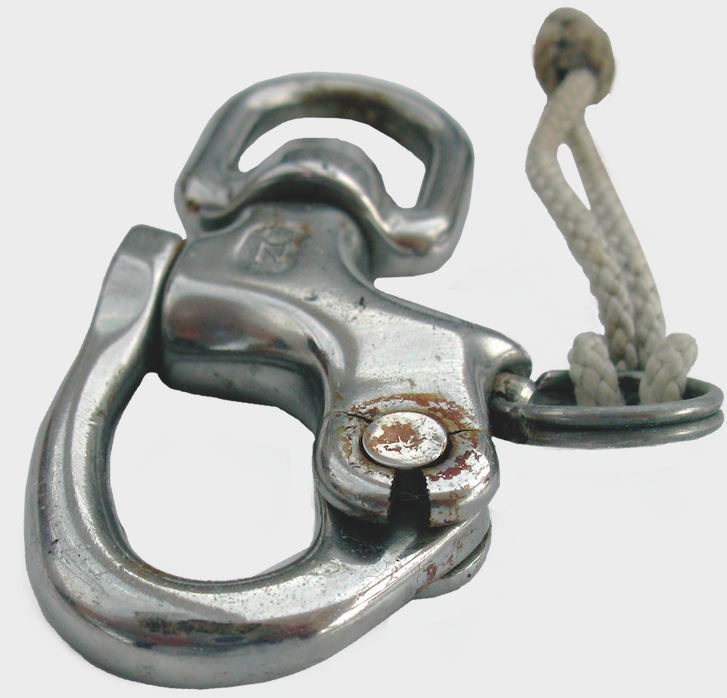
Brand names offer no guarantee against failure. Even relatively highgrade stainless-steel hardware from Ronstan, Harken, Navtec, Suncor, and Schaeffer have found their way into Practical Sailor’s Gear Graveyard. Nearly invisible crevice corrosion is a common cause of their demise, but some components have succumbed to misaligned loads or load cycles beyond their designed limits.
Bottom line: Don’t place too much confidence in used stainless steel
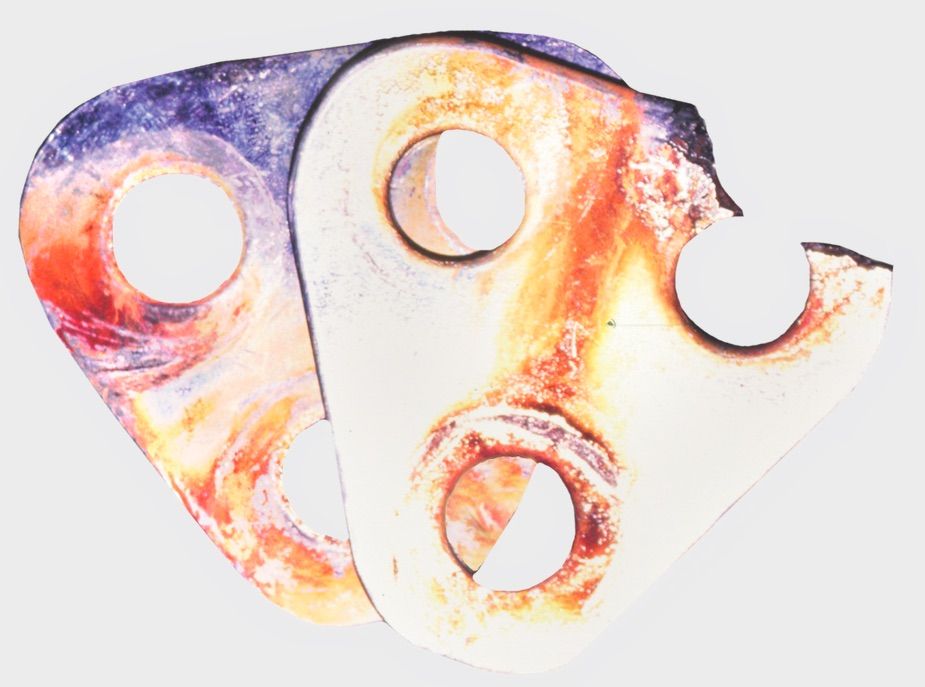



































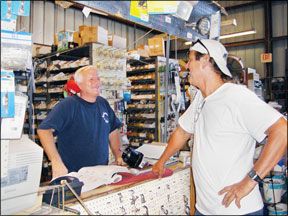




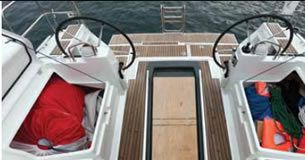
This looks like a good worldwide site. I hope you can help me to track down the Lavac electric pump.
The original one, they don’t make them anymore.
Regards
Lars
Thanks for the updated list of marine consignment stores. I have an old list that had 32 locations. When I use to do sales trips I always searched for marine consignment stores. Definitely Minney’s and Bacon Associates are tourist sites by themselves. At Minney’s I got a S&L manual 20 ton windlass for my Atkin Schooner- I have pulled myself out of several problem spots in NE.